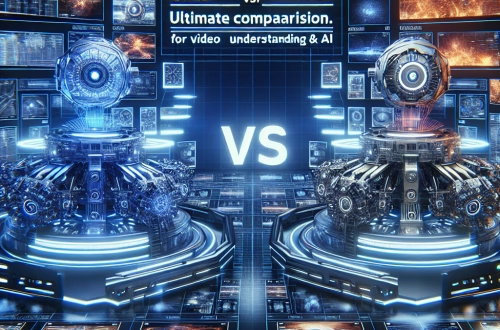Summary:
Fine-tuning LLaMA 3 for enterprise applications enables businesses to customize this powerful AI model to meet specific industry needs, such as customer service automation, data analysis, or proprietary workflow enhancement. By adjusting parameters and fine-tuning on domain-specific datasets, enterprises can optimize performance for real-world use cases. This article explores step-by-step guidance for novices in AI, covering best practices, strengths, challenges, and practical applications. Leveraging LLaMA 3 effectively can lead to cost-efficient AI adoption, improved scalability, and competitive advantages in the enterprise space.
What This Means for You:
- Cost-Effective AI Customization: Fine-tuning LLaMA 3 reduces dependency on generic AI services, allowing enterprises to create highly specialized models without building one from scratch. Pre-trained models with targeted adjustments offer faster deployment.
- Improved Data Security & Compliance: Since enterprises handle sensitive data, fine-tuning allows localized training on internal datasets while minimizing third-party dependencies. Ensure compliance by restricting API access and encrypting training data.
- Enhanced Workflow Productivity: Fine-tuned models can automate repetitive enterprise tasks such as document summarization, email classification, or technical support. Prioritize use cases with measurable ROI before scaling AI integration.
- Future Outlook or Warning: As AI regulations tighten, enterprises must anticipate compliance risks related to bias, transparency, and ethical AI. Fine-tuning requires continuous validation to prevent model drift and ensure accuracy in dynamic business environments.
Technical & Hands-On Guides
Understanding LLaMA 3 for Enterprise Applications
Meta’s LLaMA 3 is a cutting-edge open-weight large language model (LLM) optimized for efficiency and scalability, making it ideal for enterprise adoption. Unlike proprietary models from OpenAI or Google, LLaMA offers greater flexibility for fine-tuning on internal data while avoiding vendor lock-in. Enterprises benefit from its 8B and 70B parameter versions, balancing resource efficiency with high-performance customization.
Preparing Your Dataset
Successful fine-tuning requires high-quality, domain-specific datasets. Common enterprise datasets include:
- Customer Interactions: Chat logs, emails, and support tickets for customer service AI.
- Internal Documentation: Policy manuals, process guides, and compliance materials for knowledge management.
- Structured Reports: Financial data, inventory logs, and operational metrics for predictive analytics.
Clean and tokenize data for compatibility with LLaMA 3’s architecture. Remove duplicates, irrelevant noise, and personally identifiable information (PII) to enhance model reliability.
Selecting the Right Fine-Tuning Approach
Depending on enterprise needs, choose between:
- Supervised Fine-Tuning (SFT): Best for task-specific adaptation, such as sentiment analysis or document classification.
- LoRA (Low-Rank Adaptation): Reduces computational overhead by freezing most model weights while adjusting select parameters.
- QLoRA (Quantized LoRA): Further optimizes LoRA for GPU-limited environments using 4-bit quantization.
LoRA is particularly effective for enterprises with limited ML expertise, as it minimizes retraining risks while improving efficiency.
Step-by-Step Fine-Tuning Process
Using Hugging Face’s Transformers library and PyTorch, follow these steps:
- Environment Setup: Deploy LLaMA 3 on enterprise-grade GPUs (e.g., NVIDIA A100) or cloud AI platforms like AWS SageMaker.
- Load Pre-Trained Weights: Initialize the base LLaMA 3 model with Meta’s publicly released weights.
- Configure Training Parameters: Adjust learning rates (~2e-5), batch sizes (8-32), and epochs (3-5) based on dataset size.
- Apply LoRA: Integrate LoRA adapters to efficiently fine-tune attention layers without full-model retraining.
- Monitor & Validate: Track loss metrics and use validation sets to prevent overfitting.
Strengths & Weaknesses
Strengths:
- Cost-efficient alternative to proprietary enterprise AI solutions.
- High adaptability to niche use cases with proper fine-tuning.
- Scalable across departments via API deployment.
Weaknesses:
- Complex setup for teams lacking ML expertise.
- Potential biases if training data isn’t rigorously audited.
- Ongoing maintenance required to combat model decay.
Top Enterprise Use Cases
Key applications include:
- Automated Customer Support: Fine-tune for intent recognition and response generation.
- Contract Analysis: Extract key clauses or flag anomalies in legal documents.
- HR Onboarding: Power AI-driven employee training and FAQs.
Deployment Best Practices
After fine-tuning:
- Containerize models using Docker for scalable cloud or on-prem deployment.
- Implement API gateways (e.g., FastAPI) for secure internal access.
- Monitor performance with tools like Prometheus and retrain quarterly.
People Also Ask About:
- Can LLaMA 3 replace commercial AI services? While fine-tuned LLaMA 3 competes with services like GPT-4 for specific tasks, enterprises may still need hybrid solutions for high-stakes applications requiring proprietary model oversight.
- How much data is required for fine-tuning? For LoRA-based fine-tuning, even 1,000-5,000 high-quality samples can yield significant improvements, though larger datasets improve generalization.
- What hardware is needed? The 8B model can run on a single A100 GPU (40GB VRAM), while the 70B version demands multi-GPU setups or quantization techniques.
- Is LLaMA 3 GDPR-compliant? Fine-tuning on local data aids compliance, but enterprises must still audit outputs for inadvertent PII exposure or bias.
Expert Opinion:
Enterprises should prioritize explainability and guardrails when fine-tuning LLaMA 3, as unchecked models risk operational failures or reputational harm. Emerging tools like reinforcement learning from human feedback (RLHF) can refine outputs, but human oversight remains critical. As Meta iterates on LLaMA 3’s capabilities, enterprises must balance innovation with robust testing protocols to mitigate AI-related liabilities.
Extra Information:
- Hugging Face Transformers Documentation: Essential for implementing LoRA and accessing pre-trained LLaMA 3 weights.
- Meta’s LLaMA 3 Announcement: Official details on model architecture and licensing.
Related Key Terms:
- fine-tune LLaMA 3 for business automation
- low-cost enterprise AI customization with LLaMA
- how to deploy LLaMA 3 on AWS for enterprises
- best practices for LoRA fine-tuning in 2024
- enterprise-grade AI model compliance guide
Check out our AI Model Comparison Tool here: AI Model Comparison Tool
*Featured image provided by Pixabay




